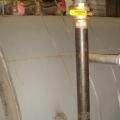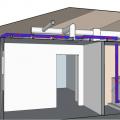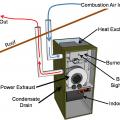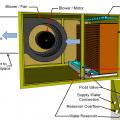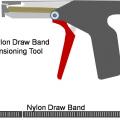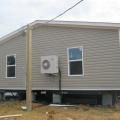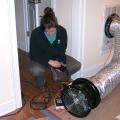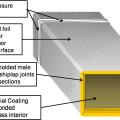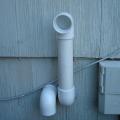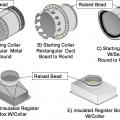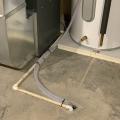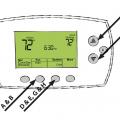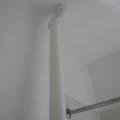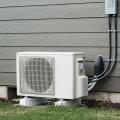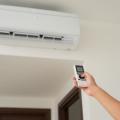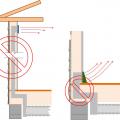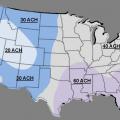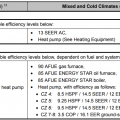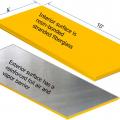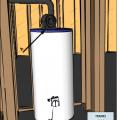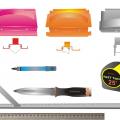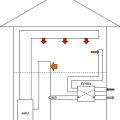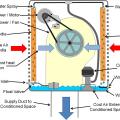Showing results 1 - 50 of 141
A central fan-integrated supply system uses a fresh air intake ducted to the home's central furnace or air handler unit to supply fresh air throughout the home
A cool room should have low enough heat gains to be easily cooled by a small single-zone cooling system such as a mini-split or a window air-conditioner as shown here
A direct-vent sealed-combustion fireplace takes its combustion air directly from outside through a dedicated air inlet and vents combustion products directly outside
A direct-vent sealed-combustion furnace has dedicated pipes for combustion air and exhaust
A foaming cleaner is used to clean the coils inside this ductless indoor unit; a mini-split bib surrounds the unit to contain overspray and drips
A foaming sprayer and mini-split bib are required to properly clean this ductless wall-mounted indoor unit
A modern single-inlet direct evaporative cooler draws outside air through an 8- to 12-inch media filter
A nylon draw band and tensioning tool are used to secure the inner coil of the pre-insulated flexible duct
A nylon draw band and tensioning tool are used to secure the inner liner of the pre-insulated flexible duct
A permanent awning prevents snow and overflowing ice dams from causing damage to HVAC equipment below.
A properly sized cold climate heat pump can meet 100% of a home’s heating load in nearly any location in the United States
A properly sized high-efficiency heat pump is located in conditioned space in a closet inside the home.
A single ductless heat pump heats and cools the country’s first DOE Zero Energy Ready certified manufactured home.
After securing the inner coil, cover the draw band and the seam with a generous amount of mastic
Because flue temperatures are cool, intake and exhaust ducts on a Category 4 direct-vent sealed-combustion condensing furnace can be made of PVC
By plotting the heating capacities at -4°F and 5°F and drawing a line between them, the capacity at 0°F can be estimated
Collars that are specifically made for flexible duct have a raised bead to prevent the duct from slipping off
Concept behind an evaporative cooler – warm air is cooled as the air passes through a wet medium and gives up some of its heat to evaporate the water
Condensate from this heat pump water heater is routed to a nearby floor drain, shared with the condensate lines from a condensing gas furnace and an air conditioning coil
Cool air flow is produced when the cooling cycle is energized (set thermostat to “cool”)
Cooling air temperatures that can be achieved by a direct evaporative cooler at various outdoor conditions
Cut fiber board with a red V-groove tool and a gray shiplap tool to create mitered corners and a shiplapped edge for duct sections
Direct-heat risers are bare pipes that heat the space they're in without connected radiators
Ductless indoor units like this one are controlled individually by handheld remote controllers.
Evaporative Cooler Sizing in ACH based on wet-bulb temperatures at 1% summer design conditions
Example expanded performance table from a 1.5-ton air conditioner
For fireplaces that are not mechanically drafted or direct-vented to outdoors, total net rated exhaust flow of the two largest exhaust fans is .15 CFM per 100 sq. ft. of occupiable space when at full capacity
Furnaces, boilers, and water heaters located within the home’s pressure boundary are mechanically drafted or direct-vented
Hand tools for cutting fiber board sheets include a knife, straight edge, and color-coded edge-cutting tools
If HVAC duct must be installed in an exterior wall, separate it from the exterior with at least R-6 of continuous rigid insulation
If integrating an ERV/HRV with the heating/cooling duct system, add dedicated ducts for either the supply or return side to prevent short-circuiting of air distribution
In a typical old style multi-inlet evaporative cooler, the blower fan draws outside air in through multiple media filters and blows it into the home



